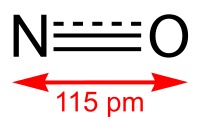
Photo from wikipedia
Pulsed dye laser (PDL) is the main treatment for port wine stain (PWS), but a considerable number of patients show low clearances. The reason for the poor efficacy is related… Click to show full abstract
Pulsed dye laser (PDL) is the main treatment for port wine stain (PWS), but a considerable number of patients show low clearances. The reason for the poor efficacy is related to PDL‐induced angiogenesis. Vascular endothelial growth factor (VEGF) plays an important role in PDL‐induced angiogenesis and can activate the tyrosine kinase activity of VEGF receptor (VEGFR) in endothelial cells. It triggers a full range of responses, and then participates in the regulation of angiogenesis. Tivozanib is an inhibitor of VEGFR tyrosine kinase activity, which can block the pro‐angiogenic effect of VEGF and reduce vascular permeability.
Journal Title: Lasers in Surgery and Medicine
Year Published: 2022
Link to full text (if available)
Share on Social Media: Sign Up to like & get
recommendations!